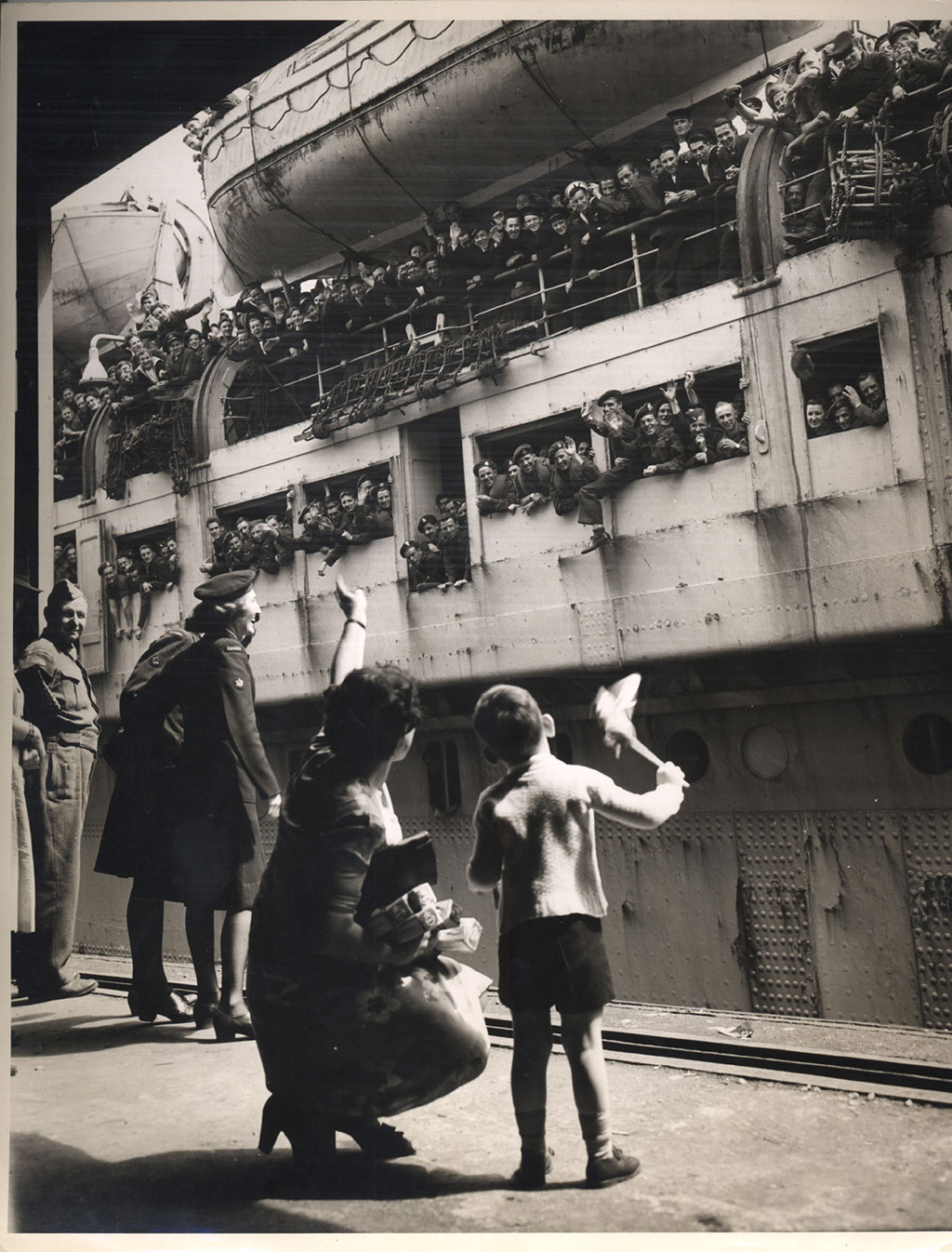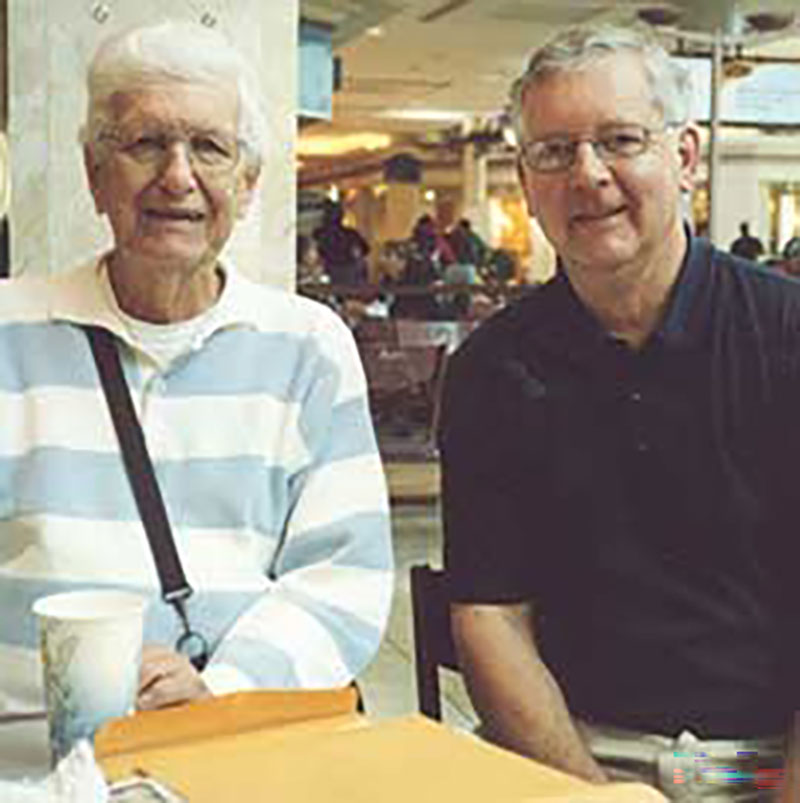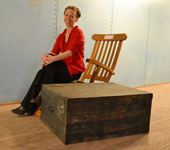Almost half a million Canadian military personnel departed from Pier 21 to serve overseas during the Second World War. This image depicts one of the first arrivals of a troop ship carrying soldiers back to Canada after World War II.

The Ile de France, laden with ecstatic soldiers, docked at Pier 21 on July 14, 1945. Flora Campbell was visiting her aunt when she heard the music on the waterfront and decided to bring her young son David down to the Pier to greet the soldiers. The boxes in her arms are cookies, which the soldiers had thrown down to the well-wishers who had come to watch their long awaited return to Canada.
This photograph truly captures the energy and rejuvenation of spirit, which accompanied the end of the Second World War. Many emotional arrivals and reunions took place at Pier 21 but the homecoming of the Canadian soldiers left an indelible impression on the immigration staff and all Haligonians.
David’s father had worked for Harrison Brother’s Limited, who were contracted to help ready passenger liners for war by painting them in battle gray. And it wasn’t long before his father’s love and knowledge of trains and ships was passed down to Dave. Between 1959 and 1972, Dave returned to the Pier to work for Newfoundland-Canada Steamships Limited, which later merged with F.K. Warren Limited.
When Dave began his career, Pier 21 was a noisy, bustling spot with ships calling daily. Dave would occasionally bring his wife Marlene down to the Pier for an evening onboard one of the liners, where he insists the food was excellent and a rum and coke cost a mere 35 cents.
With ships calling for longer stays, Dave and his co-workers became familiar with the international crews. Paid for 40 hours per week, he and his friends were frequently on call as a result of the busy shipping schedule, especially during the winter.
By 1965, Cunard had closed their Halifax offices and were in the process of selling the Queen Mary and Queen Elizabeth. For Dave Campbell it was the end of an era. Immigrants were choosing to fly and Pier 21 looked more like a cargo shed than the immigration hub it had once been.
By 1971, Pier 21 had closed and Dave’s tenure on the waterfront was nearing an end. Dave took a government position and had a successful career, though nothing in his later working life ever rivaled the excitement of his time in the steamship business.
Now retired, Dave volunteers at the Museum by aiding our efforts to collect and organize train and ship data. He also shares his vivid memories of the soldiers’ return and many other events he witnessed at the Pier.
In 2007, Veteran Frank Poole was reunited with Dave Campbell after recognizing himself as one of the servicemen in the now famous photograph.

